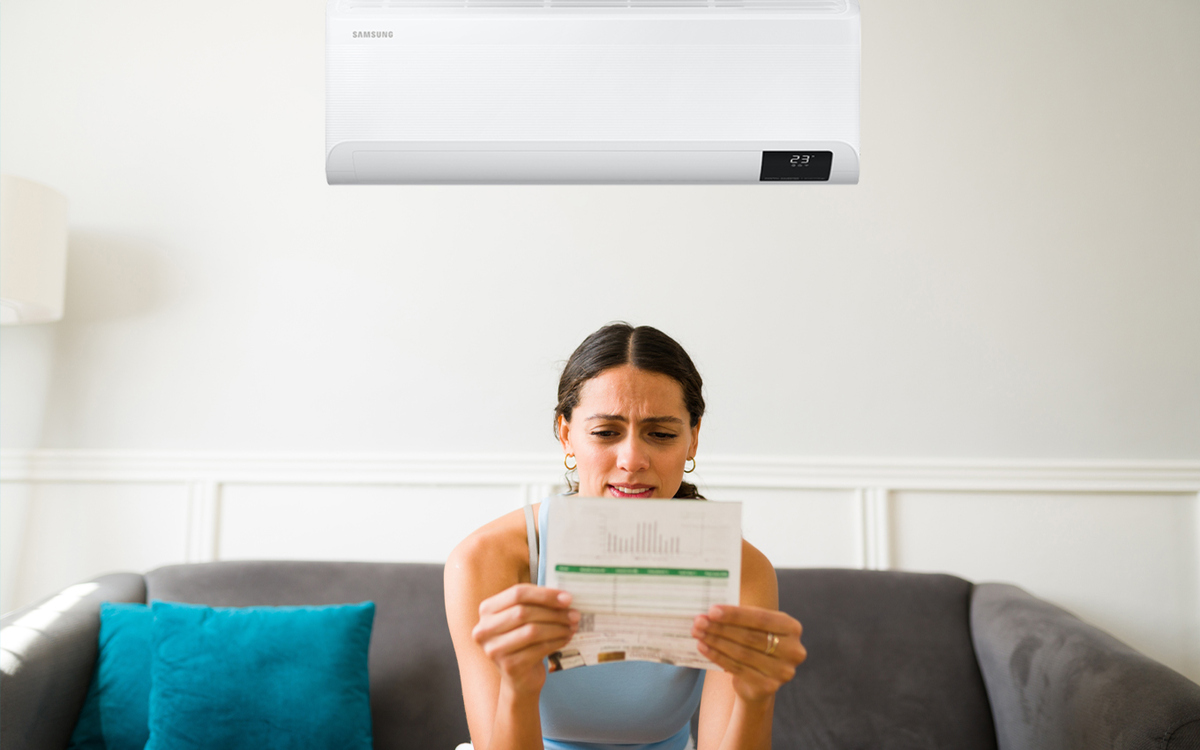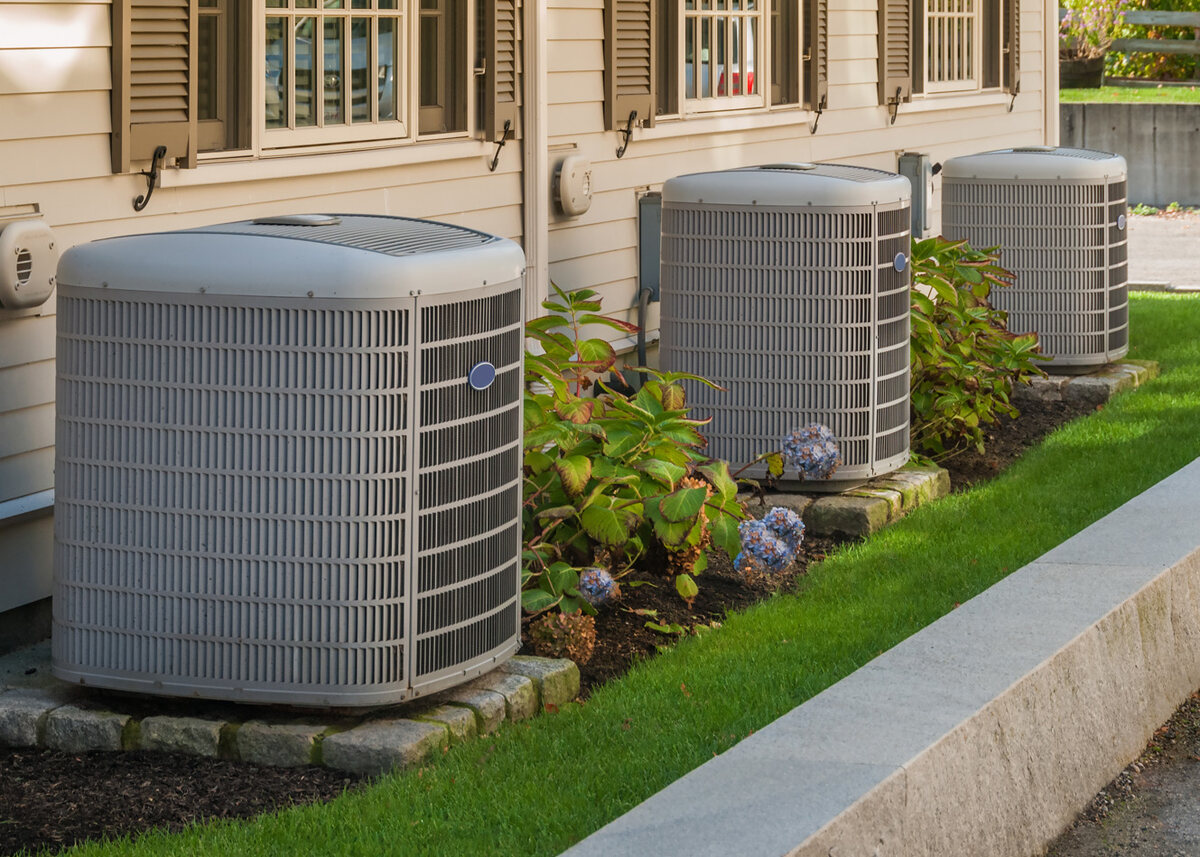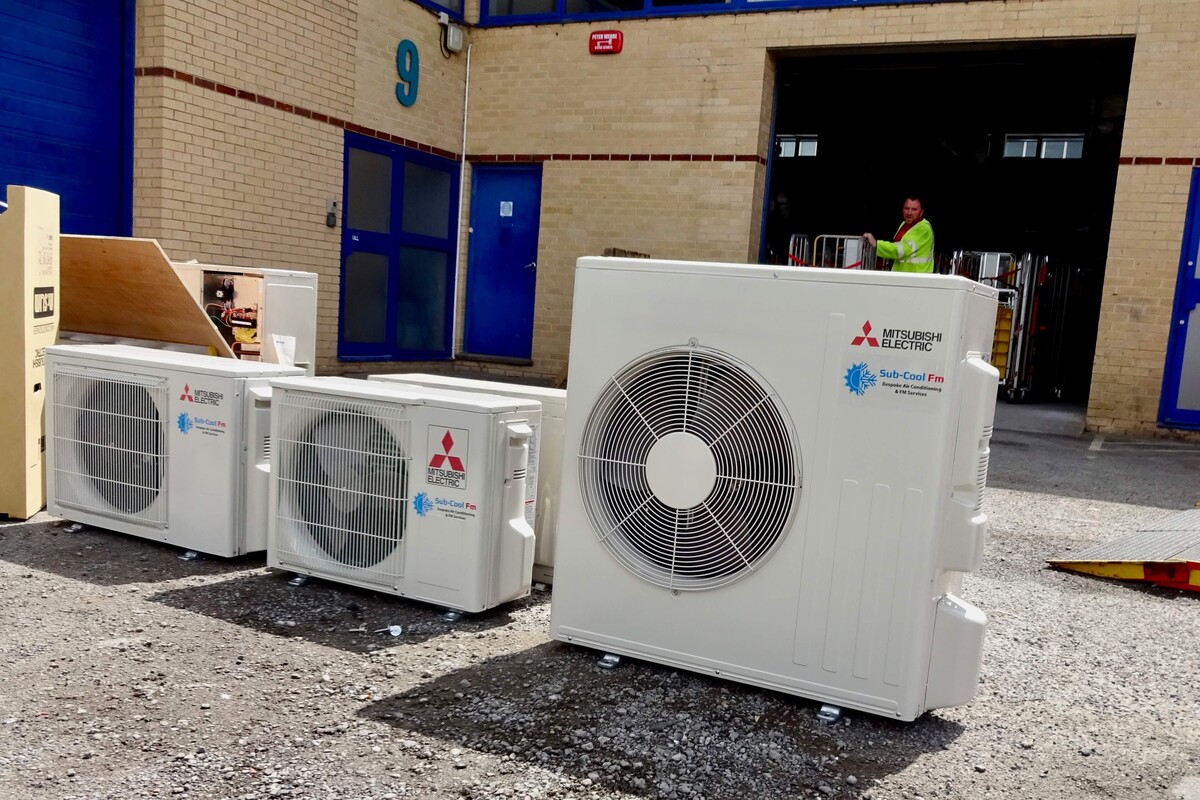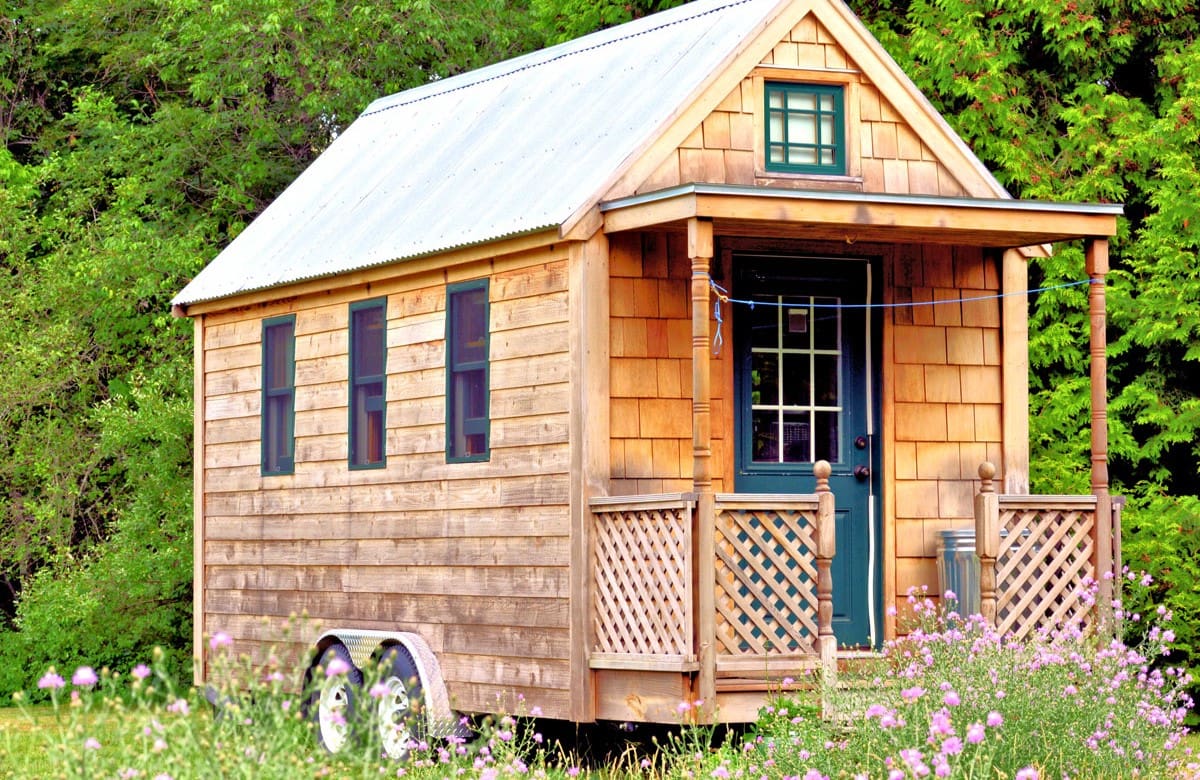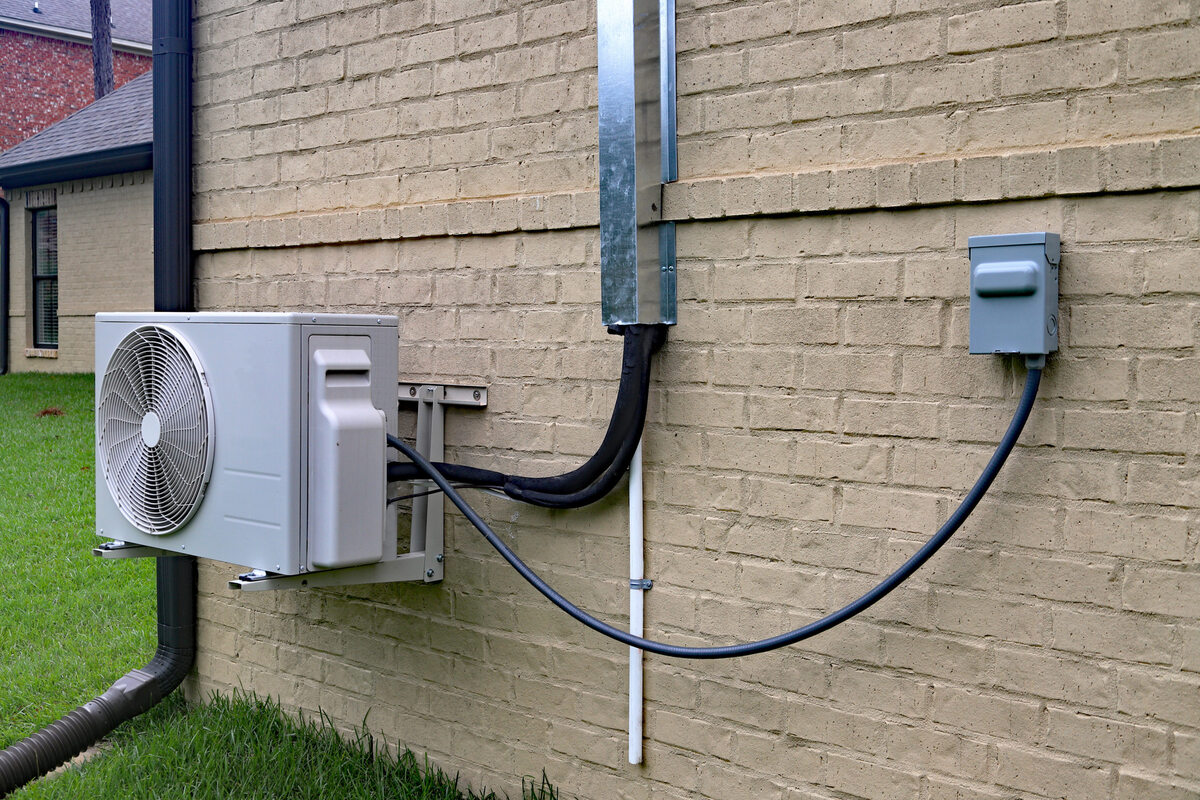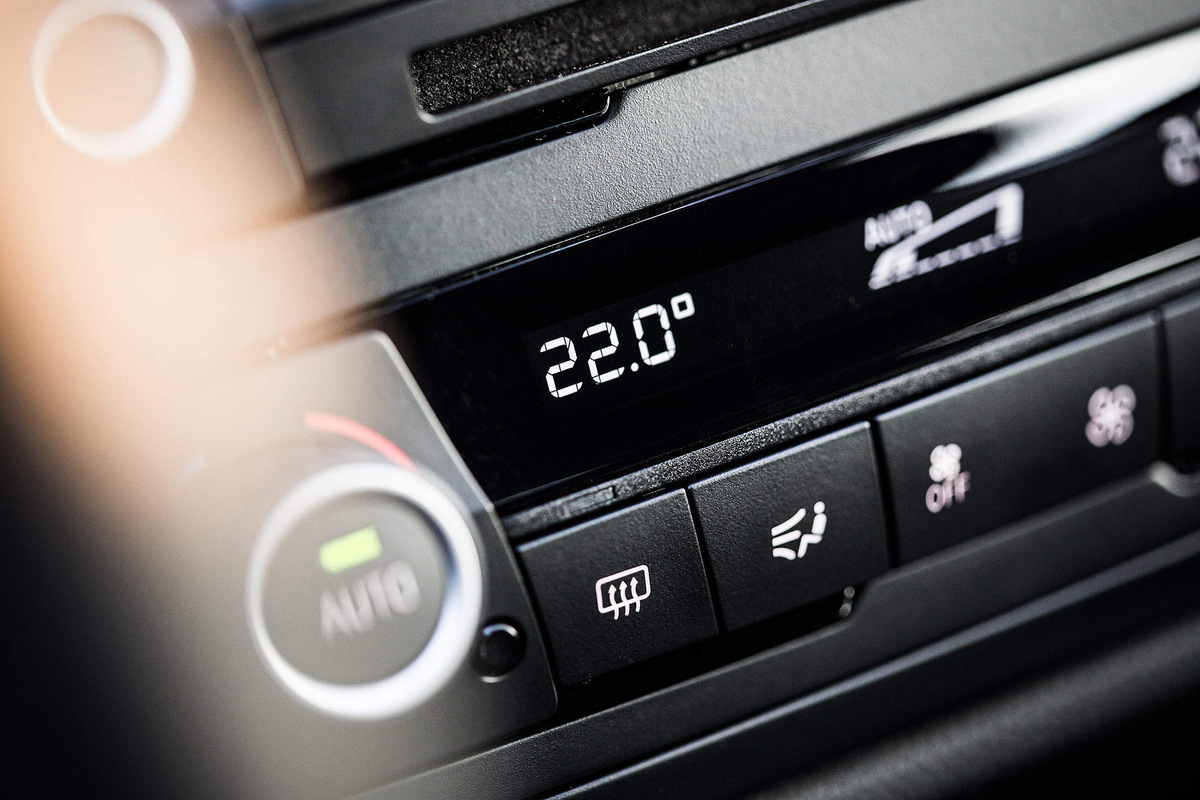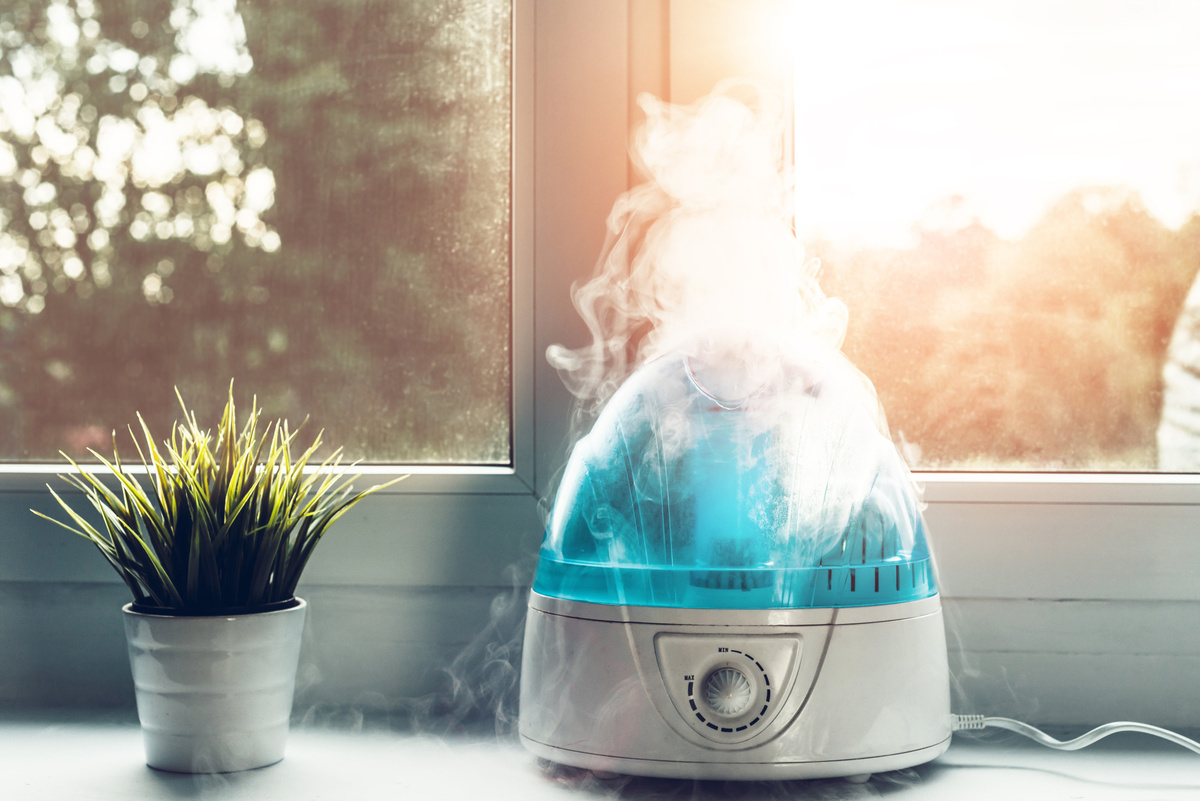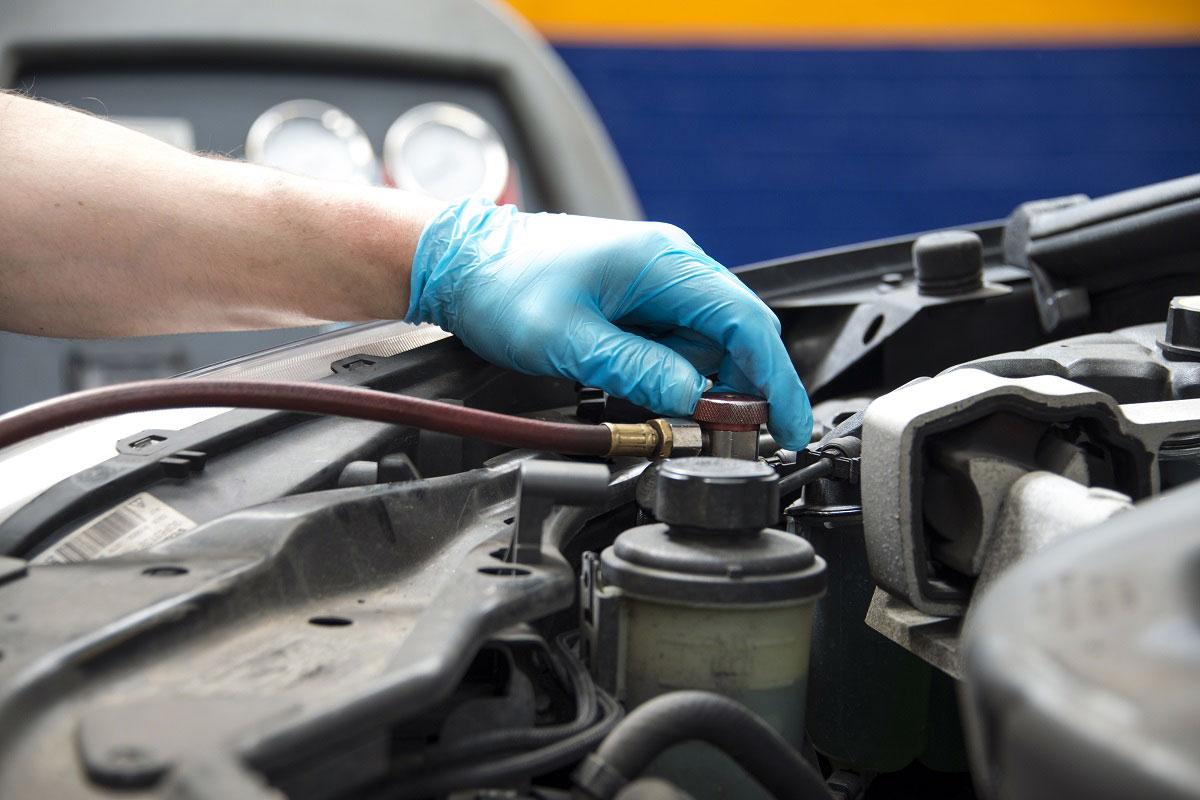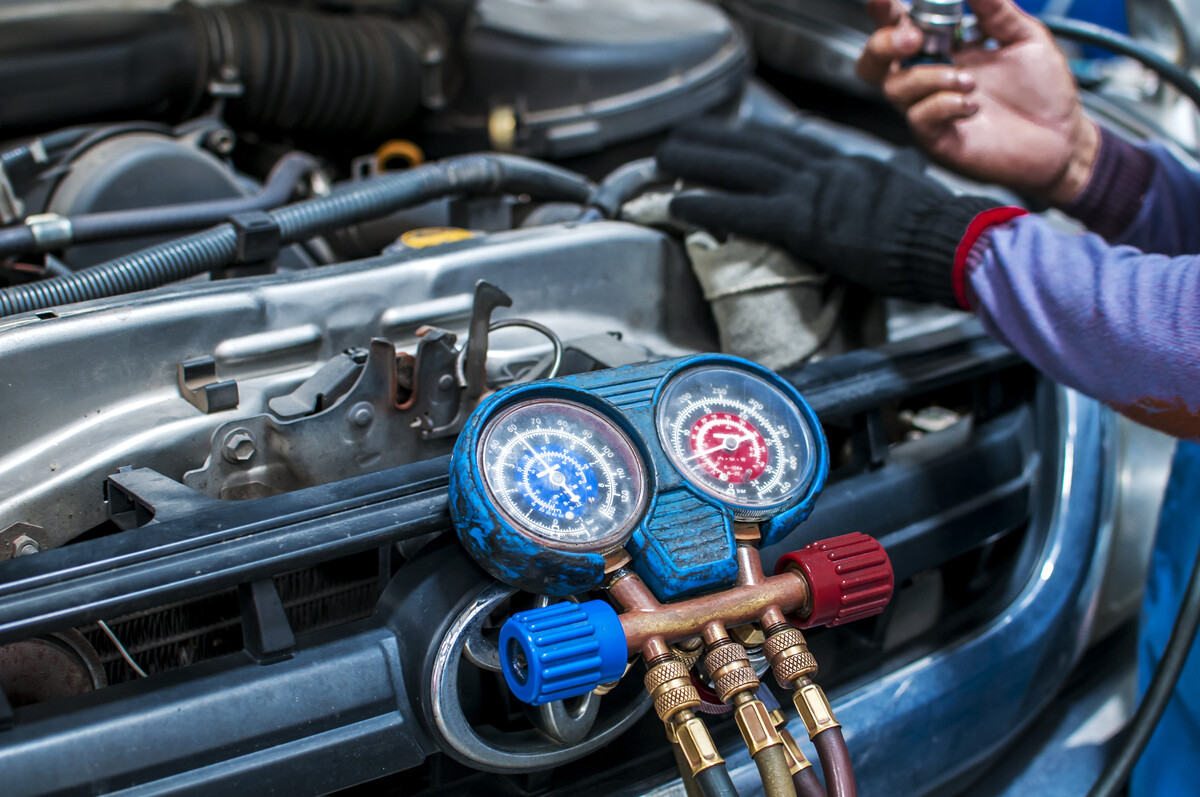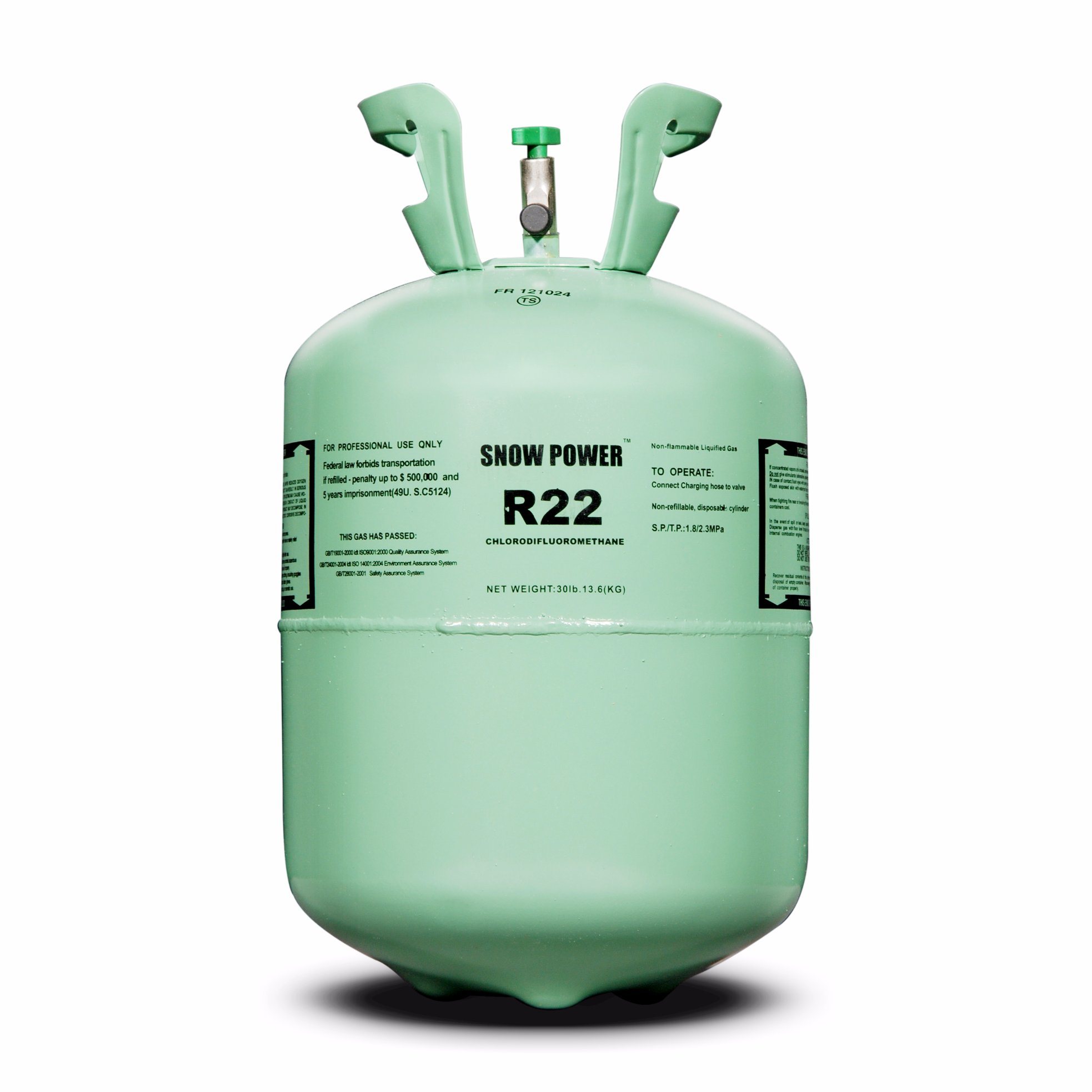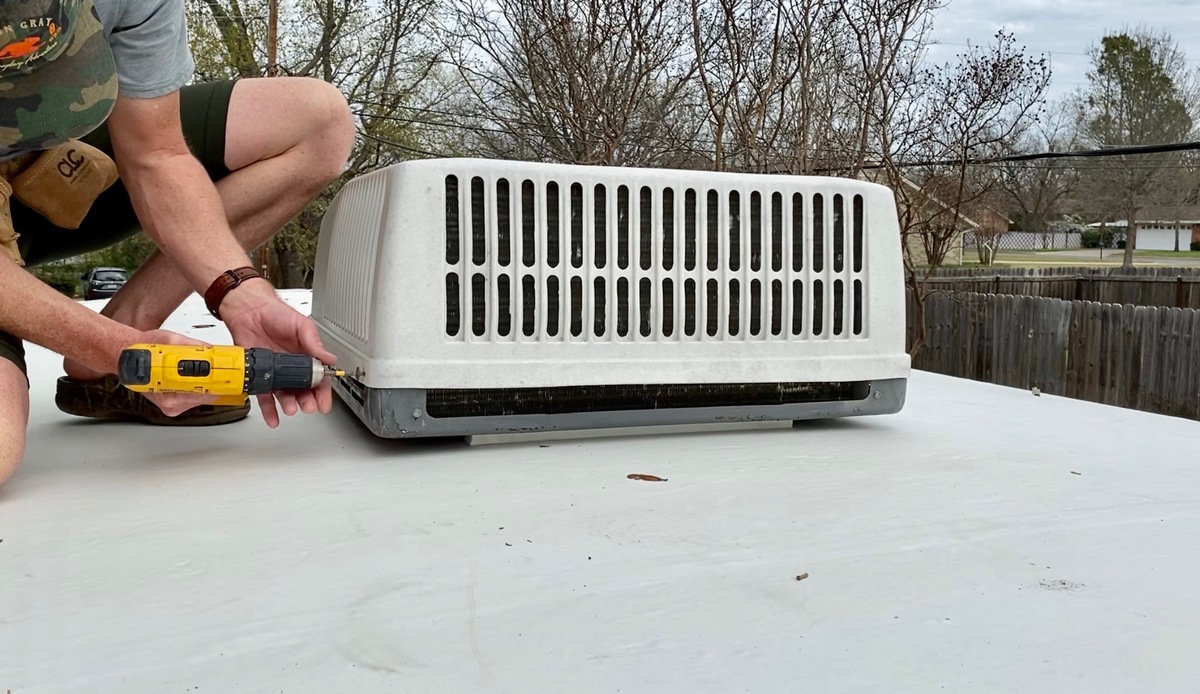Home>Home Maintenance>How To Use Air Conditioning Most Efficiently
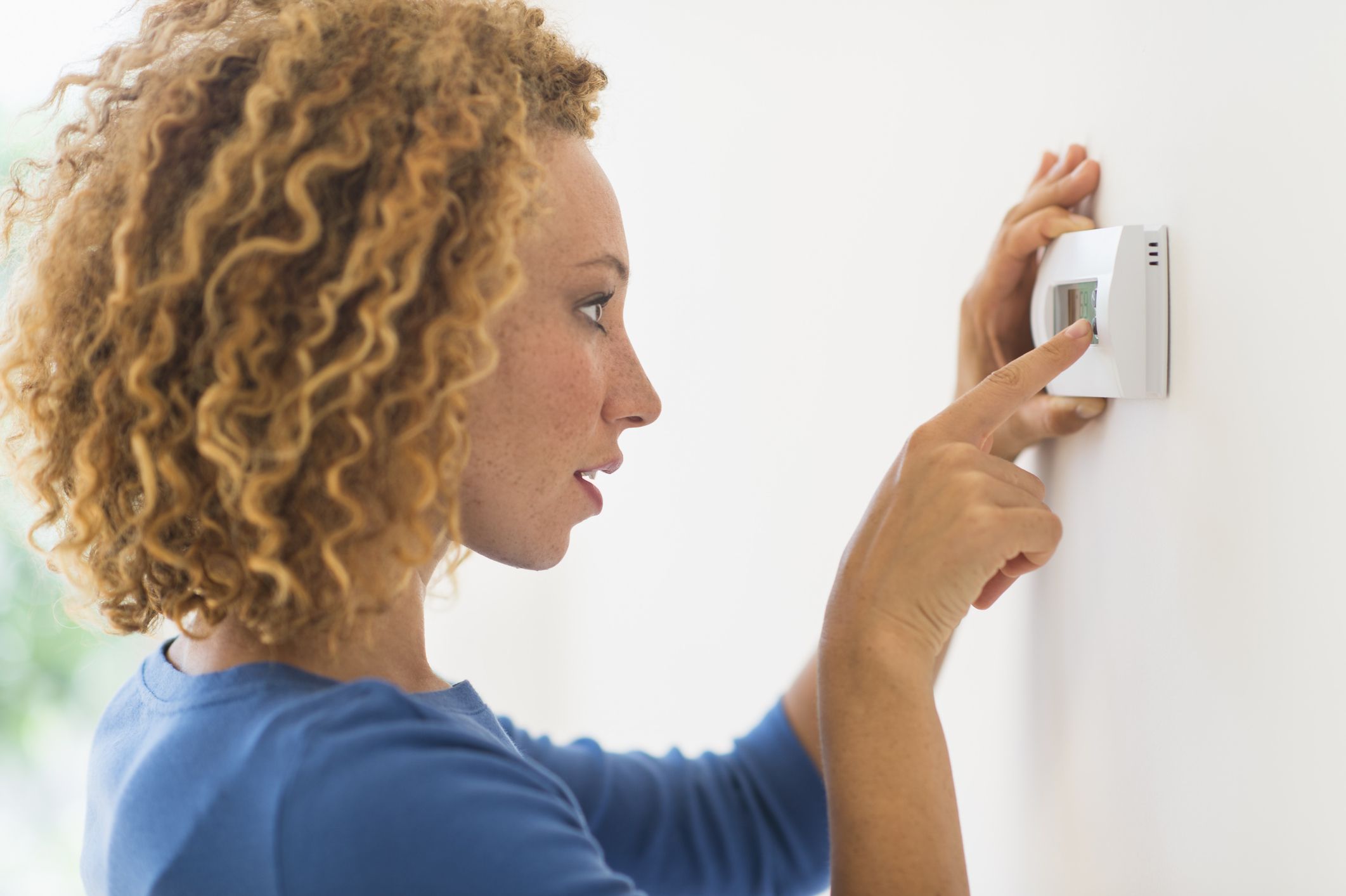

Home Maintenance
How To Use Air Conditioning Most Efficiently
Modified: March 6, 2024
Learn how to use your home air conditioning most efficiently with these helpful maintenance tips. Save energy and stay comfortable!
(Many of the links in this article redirect to a specific reviewed product. Your purchase of these products through affiliate links helps to generate commission for Storables.com, at no extra cost. Learn more)
Introduction
Welcome to the world of air conditioning! In hotter climates or during scorching summer months, air conditioning becomes a lifesaver. It keeps us cool and comfortable, allowing us to escape the relentless heat outside. However, running an air conditioner can also lead to high energy consumption and increased electricity bills if not used efficiently.
But fear not! By following a few simple tips and tricks, you can optimize the use of your air conditioning system, ensuring maximum efficiency and cost savings while staying comfortable. In this article, we’ll explore various techniques to help you make the most out of your air conditioner without breaking the bank.
Understanding how your air conditioner works is the first step towards efficient usage. Most air conditioning systems operate by removing heat and moisture from the indoor air, cooling it down, and then circulating it back into the room. This process is achieved through a series of components, including the compressor, condenser, evaporator, and refrigerant. A thermostat helps regulate the temperature by turning the system on and off as needed.
Now that we have a basic understanding of how air conditioners function, let’s dive into the practical strategies you can employ to use your air conditioner most efficiently. From setting the ideal temperature to utilizing fans and managing humidity levels, we’ll cover everything you need to know.
Key Takeaways:
- Keep your home cool and save money by setting your air conditioner to 72-78°F, using fans strategically, and insulating your space to maximize efficiency and comfort.
- Regular maintenance, managing humidity levels, and considering energy-efficient AC models are key to reducing energy consumption and maintaining a comfortable indoor environment.
Understanding your air conditioner
Before we delve into optimizing the efficiency of your air conditioner, it’s essential to have a comprehensive understanding of how it operates. Knowing the different parts and functions will help you make informed decisions when it comes to usage and maintenance.
An air conditioning system consists of several key components, each playing a crucial role in the cooling process:
- Compressor: The compressor is responsible for circulating the refrigerant and increasing its temperature and pressure.
- Condenser: The condenser receives the hot refrigerant vapor from the compressor and cools it down, causing it to condense into a liquid state.
- Evaporator: The evaporator is located inside your home and is responsible for absorbing heat from the indoor air, allowing it to cool down as the liquid refrigerant evaporates.
- Refrigerant: The refrigerant is a chemical substance that plays a crucial role in the cooling process. It absorbs and releases heat as it changes between liquid and gaseous states.
- Thermostat: The thermostat acts as the control center of your air conditioner and allows you to set the desired temperature. It also regulates when the system turns on and off to maintain the set temperature.
Understanding these components will enable you to troubleshoot minor issues and communicate more effectively with technicians if any major problems arise.
Additionally, it’s worth noting the energy efficiency rating of your air conditioning unit. This is indicated by the seasonal energy efficiency ratio (SEER). Higher SEER ratings indicate greater energy efficiency, meaning the unit uses less electricity to provide the same cooling output. Upgrading to a more energy-efficient model can result in significant cost savings in the long run.
Now that we have a solid foundation of air conditioning knowledge, let’s move on to the practical steps you can take to optimize the usage of your system and increase its efficiency.
Setting the ideal temperature
Setting the right temperature on your air conditioner is crucial for both comfort and energy efficiency. While it may be tempting to crank up the coolness and create a chilly environment, doing so can lead to wasted energy and higher electricity bills.
The recommended temperature for a comfortable indoor environment is around 72-78°F (22-26°C) during hot summer months. This range provides a balance of coolness without excessive strain on your air conditioner.
When setting the temperature, consider factors such as your personal comfort preferences, the outdoor temperature, and the level of humidity. It’s important to find a temperature that keeps you comfortable while also minimizing energy usage.
Avoid setting the temperature too low, as this will not cool the room any faster. It will only use more energy and potentially lead to discomfort due to the stark temperature difference between the indoor and outdoor environments.
Instead, consider using programmable thermostats, which allow you to set different temperatures for different times of the day. For example, you can program the thermostat to increase the temperature slightly during the hours when you’re away from home or asleep. This way, you can save energy without sacrificing comfort.
Another effective strategy is to make use of the “auto” mode on your thermostat. This mode allows the air conditioner to automatically adjust the fan speed and temperature to maintain the desired comfort level. By using “auto” mode instead of “cool” or “on,” you can prevent the fan from constantly running and wasting energy.
Remember, finding the ideal temperature is all about striking a balance between comfort and energy efficiency. Experiment with different settings and pay attention to the effects on both your comfort level and energy consumption.
Properly insulating your space
Proper insulation is a key factor in maintaining a comfortable indoor environment and maximizing the efficiency of your air conditioner. Insulation helps prevent the transfer of heat between your home and the external environment, keeping the cool air in and the hot air out.
The first area to focus on is the windows. Windows are a significant source of heat transfer, particularly if they are poorly insulated or have gaps. Consider installing double-glazed windows, which have two layers of glass with a sealed air gap in between. This helps to reduce heat transfer and improve energy efficiency. Additionally, using window film or shades can further enhance the insulation by blocking out sunlight and reducing the amount of heat entering your home.
Insulating your walls and ceilings is also crucial. Use insulation materials such as fiberglass, cellulose, or foam to reduce heat transfer and increase energy efficiency. Insulation helps to keep the cool air inside and prevent the hot air from infiltrating your living space. It also helps to reduce noise from the outside, providing a more comfortable and quiet environment. Consider hiring a professional to assess your insulation needs and make recommendations based on your home’s specific requirements.
Don’t forget about the doors as well. Weatherstripping around door frames can help seal any gaps and prevent drafts, reducing heat transfer. Door sweeps or draft stoppers are also effective in preventing air leakage at the bottom of doors.
Another area to consider is the attic. Proper insulation in the attic helps to prevent the transfer of heat from the roof to the rest of the house. Without adequate insulation, hot air can enter your living space, making your air conditioner work harder to maintain a cool temperature. Insulating the attic not only improves energy efficiency but also helps to maintain more consistent temperatures throughout your home.
By properly insulating your space, you can minimize heat transfer and ensure that the cool air produced by your air conditioner stays inside your home. This not only enhances comfort but also reduces the workload on your air conditioning system, leading to energy savings in the long run.
Utilizing programmable thermostats
Programmable thermostats are a game-changer when it comes to optimizing the efficiency of your air conditioner. These devices allow you to set different temperature schedules throughout the day, ensuring that your air conditioning system is running at the most energy-efficient levels when needed.
Setting up a program on your thermostat can significantly reduce energy consumption and lower your electricity bills. Here are some tips for effectively utilizing programmable thermostats:
- Establish a schedule: Determine the times of day when you typically need cooling the most. Set your programmable thermostat to lower the temperature a few degrees before those times, ensuring that the desired comfort level is reached when you need it.
- Consider your routine: If you have a consistent daily routine, program your thermostat to adjust the temperature accordingly. For example, if you’re typically away from home during the day, raise the temperature while you’re gone and have it lowered right before you return.
- Utilize setback temperatures: During times when you’re sleeping or away from home for an extended period, take advantage of the setback feature on your programmable thermostat. This allows you to set less cooling during those times, saving energy and money.
- Use multiple temperature settings: Some programmable thermostats offer the option to set different temperatures for different zones of your home. This feature can be particularly useful if you have rooms that are used less frequently, allowing you to optimize cooling only in the areas you need.
- Adjust as needed: Pay attention to any changes in your routine and adjust your thermostat settings accordingly. Being flexible with your programming ensures that your air conditioner is running efficiently and meeting your comfort needs.
By using programmable thermostats effectively, you can avoid unnecessary cooling when you’re not at home or don’t need it, resulting in significant energy savings. These devices give you greater control over your air conditioning system and allow you to customize your cooling patterns to match your lifestyle.
Remember to refer to the manufacturer’s instructions for your specific programmable thermostat model to ensure proper setup and programming. If you’re unsure, consult with a professional technician who can help you optimize the settings for maximum efficiency.
Read more: How To Use Air Conditioning Gauges
Using fans in conjunction with AC
When it comes to maximizing the efficiency of your air conditioning system, consider using fans in conjunction with your AC. Fans can help circulate cool air throughout your space, allowing you to maintain comfort while reducing the reliance on your air conditioner.
Here are some strategies to effectively use fans alongside your AC:
- Ceiling fans: If your home is equipped with ceiling fans, make sure to utilize them to their full potential. Ceiling fans create a breeze that can make the room feel cooler, even at higher temperatures. In the summertime, set your ceiling fan to rotate counterclockwise to create a downward airflow, providing a cooling effect.
- Use oscillating fans: Place oscillating fans strategically around your space to ensure proper air circulation. Position them near vents or windows to help distribute the cool air from your air conditioner more efficiently.
- Consider portable fans: Portable fans can be a cost-effective way to increase airflow and enhance the cooling effect in specific areas. Place them in rooms where you spend the most time to create a more comfortable environment while reducing the workload on your air conditioner.
- Use fans strategically: Don’t just rely on your air conditioner alone. Use fans in combination with your AC to help cool down a room faster. This allows you to set the temperature slightly higher on your air conditioner, saving energy without sacrificing comfort.
- Utilize natural ventilation: Open windows and doors during cooler parts of the day or in the evenings when outdoor temperatures are lower. Position fans to draw in the cool breeze and circulate it throughout your space. This can provide natural ventilation and reduce the need for the air conditioner, especially in mild weather conditions.
By using fans in conjunction with your air conditioner, you can create a more comfortable and evenly cooled environment while reducing energy consumption. Remember to adjust the settings on your fans according to your preferences and the specific conditions of your space.
Keep in mind that fans only circulate air and do not actually cool it. Therefore, it’s important to ensure that your air conditioner is functioning optimally and producing cool air before relying solely on fans.
Experiment with different fan placements and settings to find the best combination that works for you. Using fans strategically can help you maintain a comfortable indoor environment and reduce your reliance on your air conditioning system, leading to energy savings in the long run.
Maintaining and cleaning your air conditioner
Proper maintenance and regular cleaning of your air conditioner are vital to its efficient operation and longevity. Neglecting these tasks can lead to reduced performance, decreased airflow, and even system failures. Here are some essential maintenance and cleaning tips to keep your air conditioner in top shape:
- Change or clean air filters: Clogged and dirty air filters restrict airflow and make your air conditioner work harder. Clean or replace your filters regularly, following the manufacturer’s guidelines. This improves efficiency and ensures that clean air is circulating in your space.
- Clean the condenser coils: Over time, the condenser coils of your air conditioner can accumulate dust, dirt, and debris. This hinders heat transfer and reduces efficiency. Use a soft brush or vacuum to gently clean the coils and remove any buildup. Consider scheduling a professional maintenance service to thoroughly clean the coils and optimize performance.
- Clear debris around the outdoor unit: Keep the area around the outdoor condenser unit clean and free of debris. Trim any plants, bushes, or grass that may obstruct airflow. Ensure that there is at least two feet of clearance around the unit to allow proper ventilation.
- Check and clean the evaporator coils: The evaporator coils, located inside your home, can also collect dust and dirt. Inspect the coils and clean them if necessary. A professional technician can perform a more thorough cleaning to remove any stubborn buildup.
- Inspect and clean the drain line: Over time, the drain line of your air conditioner can become clogged with algae, mold, or debris. This can lead to water leaks or even system malfunctions. Regularly inspect the drain line and use a mixture of bleach and water to clean it if necessary.
- Check the refrigerant level: Insufficient refrigerant can impact the cooling efficiency of your air conditioner. If you suspect a refrigerant leak, it’s best to consult a professional technician to identify and fix the issue.
- Schedule professional maintenance: Consider scheduling annual maintenance with a qualified HVAC technician. They can inspect, clean, and tune up your air conditioner to ensure optimal performance, detect any potential issues, and provide necessary repairs.
By maintaining and cleaning your air conditioner regularly, you can improve its efficiency, airflow, and overall performance. This not only ensures a more comfortable indoor environment but also extends the lifespan of your air conditioning system.
Remember to follow the manufacturer’s instructions and consult with a professional technician when needed. Regular maintenance and cleaning will help you avoid costly repairs, reduce energy consumption, and enjoy the benefits of a well-functioning air conditioner.
Set your air conditioning to a comfortable temperature, typically around 78°F, and use fans to circulate the cool air. Keep doors and windows closed to prevent cool air from escaping, and use curtains or blinds to block out sunlight and reduce heat. Regularly clean or replace air filters to ensure efficient operation.
Maximizing natural ventilation
In addition to relying on your air conditioner, you can take advantage of natural ventilation to cool your space and reduce energy consumption. Natural ventilation utilizes the movement of air through openings such as windows, doors, and vents to create airflow and remove heat from your home. Here are some ways to maximize natural ventilation:
- Open windows strategically: Determine the direction of the prevailing breeze and open windows on opposite sides of your space to encourage cross-ventilation. This allows fresh air to flow in while pushing out stale, hot air.
- Use window design features: Some windows are designed with features such as louvers or vents that can be adjusted to control the amount and direction of airflow. Utilize these features to optimize the natural ventilation in your space.
- Use window and door screens: Installing screens on windows and doors allows you to keep them open while keeping insects and debris out. This allows for continuous airflow without any unwanted visitors.
- Time your window openings: Open windows during cooler times of the day, such as early morning or late evening, when outdoor temperatures are lower. This reduces the reliance on your air conditioner and allows fresh, cool air to circulate in your space.
- Utilize natural ventilation in conjunction with fans: Position fans strategically near open windows or in areas where fresh air enters your space. This helps to enhance the airflow and create a cooling effect throughout your home.
- Keep doors open: If possible, keep internal doors open to allow air to flow freely throughout your space. This helps to equalize the temperature and maintain a comfortable indoor environment.
- Install ventilation systems: Consider installing mechanical or passive ventilation systems, such as roof vents or skylights, to aid in the circulation of air and promote natural ventilation.
Maximizing natural ventilation not only reduces your reliance on air conditioning but also brings in fresh air and improves indoor air quality. The combination of natural ventilation and your air conditioner can create a more comfortable and energy-efficient living space.
Experiment with different techniques and find the best approach that works for your home and climate. By utilizing natural ventilation strategies, you can significantly reduce energy consumption and enjoy the benefits of a naturally cooled environment.
Blocking out heat sources
Blocking out heat sources is an effective strategy to reduce the amount of heat that enters your space, minimizing the workload on your air conditioner and maintaining a cooler environment. Here are some techniques to block out heat sources:
- Insulate windows and doors: Use weatherstripping or caulking to seal any gaps around windows and doors. This helps to prevent warm air from infiltrating your space and keeps the cool air inside.
- Install window coverings: Use blinds, curtains, or shades to block out direct sunlight. Light-colored or reflective window coverings can help reflect heat away from your space, keeping it cooler.
- Apply window film: Install a window film or tint to reduce the amount of solar heat that enters your space. Window films can block out a significant portion of UV rays while still allowing natural light to come through.
- Use outdoor shading: Utilize outdoor shading devices such as awnings, pergolas, or shade sails to block out direct sunlight and create a cooler outdoor space. This helps to prevent the sun’s rays from directly hitting your windows and heating up your interior.
- Use reflective materials: Consider using reflective materials on your roof or exterior walls to deflect heat. These materials help to reduce heat absorption and keep your home cooler.
- Plant trees or install vegetation: Strategically plant trees or install vegetation near windows or areas that receive direct sunlight. The foliage can provide natural shade and reduce heat absorption, helping to keep your space cooler.
- Minimize use of heat-generating appliances: Avoid using heat-generating appliances such as ovens, stoves, and dryers during the hottest parts of the day. These appliances can add to the overall heat load in your home, making your air conditioner work harder to keep the space cool.
- Unplug electronics when not in use: Electronics emit heat even when they are not in use. Unplug unused electronics or use power strips with on/off switches to completely cut off power supply and reduce heat generation.
By blocking out heat sources, you can reduce the amount of heat that enters your space, resulting in a cooler environment and less strain on your air conditioning system. Implementing these strategies can help you maintain a comfortable indoor temperature and save energy.
Consider a combination of techniques that work best for your home and lifestyle. Each step you take to block out heat sources contributes to a cooler and more energy-efficient living space.
Closing blinds and curtains
Closing blinds and curtains is a simple yet effective way to reduce the heat that enters your space and maintain a cooler environment. By utilizing these window treatments strategically, you can block out sunlight and minimize the amount of heat absorbed by your interior. Here’s how to make the most out of this technique:
- Close blinds and curtains during the hottest parts of the day: When the sun is at its peak, typically between late morning and afternoon, close your blinds and curtains to prevent direct sunlight from entering your space. This creates a barrier between the sun’s rays and your interior, significantly reducing heat gain.
- Utilize light-colored or reflective blinds and curtains: Opt for blinds or curtains that are light in color or have reflective properties. Lighter shades reflect heat and sunlight rather than absorbing them, helping to keep your space cooler. Reflective blinds or curtains with a metallic or reflective backing are especially effective in blocking out heat.
- Close blinds or curtains in windows facing direct sunlight: Pay close attention to windows that receive direct sunlight for extended periods throughout the day. Keep the blinds or curtains closed in these areas to block out the intense heat and maintain a more comfortable indoor temperature.
- Consider blackout curtains: If heat control is a major concern, consider investing in blackout curtains. These curtains are made with thick, light-blocking materials that not only prevent sunlight from entering but also reduce heat transfer. Blackout curtains can significantly help in keeping your space cool, especially in rooms exposed to intense sunlight.
- Use blinds or curtains in conjunction with other cooling strategies: Closing blinds and curtains should be used in conjunction with other cooling techniques, such as using fans or adjusting the thermostat. By combining these strategies, you can maximize the cooling effect, reduce reliance on your air conditioner, and save energy.
Remember that keeping blinds and curtains closed all day can also make a space feel darker and closed off. Therefore, it’s essential to find a balance between blocking out heat and maintaining a comfortable and well-lit environment.
Experiment with different settings and strategies to determine the most effective use of blinds and curtains in your space. By taking advantage of these simple yet impactful window treatments, you can significantly reduce heat gain and maintain a cooler indoor temperature.
Managing humidity levels
Managing humidity levels is not only important for maintaining overall comfort but also plays a significant role in optimizing the efficiency of your air conditioner. High humidity can make a space feel hotter and more uncomfortable, while low humidity can lead to dryness and discomfort. Here’s how to manage humidity levels effectively:
- Use dehumidifiers: Dehumidifiers are effective devices that help remove excess moisture from the air. They can be particularly beneficial in areas with high humidity levels. Running a dehumidifier can make your space feel cooler and more comfortable, allowing you to set your air conditioner at a higher temperature without sacrificing comfort.
- Ensure proper ventilation: Good ventilation is key to reducing humidity levels. Properly ventilate areas prone to moisture such as bathrooms, kitchens, and laundry rooms. Use exhaust fans or open windows to allow humid air to escape and fresh air to enter.
- Repair any leaks or water damage: Moisture from leaks or water damage can contribute to high humidity levels. Inspect your space for any leaks or water-related issues and address them promptly to prevent further humidity issues.
- Avoid activities that add moisture: Activities such as cooking, showering, and drying clothes indoors can increase humidity levels. Make sure to use exhaust fans or open windows during these activities to allow the moisture to escape.
- Monitor indoor plants: While indoor plants provide numerous benefits, they can also release moisture into the air through a process called transpiration. If you notice increased humidity levels, consider reducing the number of plants or relocating them to a well-ventilated area.
- Use natural moisture absorbers: Place moisture-absorbing materials such as silica gel packs or charcoal near areas prone to moisture, such as closets or bathrooms. These materials help absorb excess moisture and maintain a more balanced humidity level.
- Maintain your air conditioning system: Proper maintenance of your air conditioner ensures optimum dehumidification. Make sure the system is clean, all drains are clear, and filters are clean or replaced regularly. A well-maintained air conditioner removes moisture from the air more effectively.
By effectively managing humidity levels, you can create a more comfortable indoor environment and reduce the strain on your air conditioner. Balancing the humidity also helps prevent mold growth and ensures good indoor air quality.
Remember that optimal humidity levels may vary depending on personal preferences and local climate conditions. Aim for a relative humidity level between 40% and 60% for optimal comfort and energy efficiency. Use a hygrometer to monitor humidity levels and adjust your strategies accordingly.
Considering energy-efficient AC models
When it comes to optimizing the efficiency of your air conditioning system, considering energy-efficient AC models can make a significant difference. Upgrading to a more energy-efficient unit can help reduce your energy consumption, lower your carbon footprint, and save you money on electricity bills. Here’s what to consider when choosing an energy-efficient AC model:
- Look for high SEER ratings: SEER stands for Seasonal Energy Efficiency Ratio and is a measure of the cooling efficiency of an air conditioner. The higher the SEER rating, the more energy-efficient the unit. Look for models with SEER ratings of 14 or higher for optimal energy efficiency.
- Consider inverter technology: Air conditioners with inverter technology adjust their cooling capacity based on the required load. This allows them to operate at variable speeds and adapt to changing conditions, resulting in more energy-efficient operation and improved comfort.
- Check for ENERGY STAR certification: Look for air conditioners that are ENERGY STAR certified. The ENERGY STAR label indicates that the unit meets strict energy efficiency guidelines set by the Environmental Protection Agency (EPA), ensuring that you’re choosing a highly efficient and environmentally friendly option.
- Consider dual-stage or variable-speed compressors: Units with dual-stage or variable-speed compressors offer increased energy efficiency by running at lower speeds when the demand for cooling is lower. These compressors can adjust their performance to match the cooling needs more precisely, resulting in less energy wastage.
- Size the unit correctly: Ensure that the air conditioner is properly sized for your space. An oversized unit will cycle on and off frequently, leading to inefficient operation and potential comfort issues. On the other hand, an undersized unit will struggle to cool the space effectively. Consult with a professional technician to determine the appropriate cooling capacity for your specific needs.
- Inspect additional energy-saving features: Some energy-efficient AC models come with additional features to further enhance efficiency. These features can include programmable timers, sleep modes, zone cooling capabilities, and smart controls. Consider which features align with your needs and can contribute to better energy management.
Investing in an energy-efficient air conditioner not only reduces your environmental impact but also provides long-term financial benefits. While the upfront cost may be higher than standard models, the energy savings over time can offset the initial investment.
Remember to consult with a professional HVAC technician who can help you select the right energy-efficient AC model for your specific needs and ensure proper installation and performance.
Seeking professional maintenance assistance
While there are several steps you can take to optimize the efficiency of your air conditioning system on your own, seeking professional maintenance assistance is also crucial. Regular professional maintenance ensures that your air conditioner operates at its best, maximizing performance, energy efficiency, and longevity. Here’s why professional maintenance is important:
- Preventing major issues: Professional technicians have the expertise to identify and address potential problems before they escalate into major issues. They can spot worn-out components, leaks, or electrical faults that may lead to system malfunctions or breakdowns.
- Improving energy efficiency: An experienced technician can fine-tune your air conditioner to ensure optimal energy efficiency. They will clean and inspect components, check the refrigerant level, verify electrical connections, and optimize airflow. By keeping your system running smoothly, they help reduce energy consumption and lower your electricity bills.
- Extending lifespan: Regular professional maintenance helps extend the lifespan of your air conditioner. By identifying and addressing minor issues early on, technicians prevent wear and tear that can lead to major system failures. This can save you from having to replace your unit prematurely.
- Ensuring proper airflow and temperature control: A professional technician will measure and adjust the airflow and temperature differentials in your system. They will inspect and clean the evaporator and condenser coils, ensuring proper heat transfer and cooling performance. This helps maintain consistent temperatures and ensures that your air conditioner is operating efficiently.
- Preserving indoor air quality: A well-maintained air conditioner contributes to better indoor air quality. Technicians will clean or replace air filters, remove dust and debris from the system, and check ventilation to ensure that clean, fresh air is being circulated in your space.
- Compliance with warranty requirements: Many manufacturers require regular professional maintenance to keep the warranty valid. By scheduling professional maintenance, you not only comply with warranty terms but also have peace of mind knowing that your air conditioner is well-maintained and protected.
It’s recommended to schedule professional maintenance at least once a year, ideally before the start of the cooling season. However, the frequency may vary based on factors such as the age of your unit, local climate conditions, and manufacturer recommendations.
Ensure that you hire a reputable HVAC company or technician with proper certifications and experience. They should perform a thorough inspection, cleaning, and maintenance routine to keep your air conditioning system in excellent working condition.
By seeking professional maintenance assistance, you can rest assured that your air conditioner is in good hands, operating optimally, and providing you with efficient and reliable cooling for years to come.
Read more: What Countries Use Air Conditioning
Conclusion
Optimizing the efficiency of your air conditioning system is not only beneficial for your comfort but also for reducing energy consumption and saving money. By implementing the strategies and techniques outlined in this article, you can use your air conditioner most efficiently while still staying cool and comfortable.
Understanding how your air conditioner operates and setting the ideal temperature are fundamental starting points. Properly insulating your space, utilizing programmable thermostats, and using fans in conjunction with your AC can further enhance efficiency. Regular maintenance, maximizing natural ventilation, blocking out heat sources, and closing blinds and curtains all contribute to reducing the workload on your air conditioner and maintaining a cooler environment.
Additionally, managing humidity levels and considering energy-efficient AC models are important steps towards sustainability and cost savings. Finally, seeking professional maintenance assistance ensures that your air conditioner is in excellent working condition and operating at its best.
By combining these strategies and techniques, you can improve energy efficiency, reduce your carbon footprint, and enjoy a comfortable and cool indoor environment. Remember, optimizing the efficiency of your air conditioner not only benefits you but also benefits the environment by conserving energy.
So, whether you’re trying to beat the heat during a scorching summer or simply looking to save on energy costs, implementing these strategies will help you make the most out of your air conditioning system while being environmentally conscious. Stay cool and enjoy the benefits of a well-utilized and efficient air conditioner!
Frequently Asked Questions about How To Use Air Conditioning Most Efficiently
Was this page helpful?
At Storables.com, we guarantee accurate and reliable information. Our content, validated by Expert Board Contributors, is crafted following stringent Editorial Policies. We're committed to providing you with well-researched, expert-backed insights for all your informational needs.
